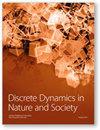Evaluation of Land Use/Land Cover Changes due to Urban Sprawl in Bengaluru Rural, Karnataka, India
IF 1.2
4区 数学
Q3 MATHEMATICS, INTERDISCIPLINARY APPLICATIONS
引用次数: 0
Abstract
The availability of productive land is significantly impacted by the global phenomenon of urbanization. The amount of land available for food production and other essential activities decreases as cities grow because the urban perimeter encroaches on rural and natural areas. Conducting research on urban sprawl analysis and land use land cover (LULC) change assessment is essential in ensuring sustainable urban growth. Bengaluru, a rapidly expanding metropolitan city, has a significant impact on the area around it, making it a prime location for this kind of study. In this study, authors sought to assess how urban sprawl affected LULC in the Bengaluru rural district that surrounds the city of Bengaluru. The study evaluated changes in LULC over a two-decade period using remote sensing data and GIS tools. Five LULC classes were used to categorize the study area: settlement, waterbody, vegetation, agriculture, and barren land. The maximum likelihood technique was used to classify Landsat images from three different time periods using the supervised image classification method in the ERDAS software. Accuracy assessment was used to gauge the classified images’ accuracy. The study’s important findings showed how the LULC classes in the study area have been negatively impacted by the urban sprawl. The study emphasizes the significance of ongoing research in LULC change assessment and urban sprawl analysis to ensure sustainable urban growth and safeguard the availability of productive land.印度卡纳塔克邦邦班加罗尔农村城市扩张导致的土地利用/土地覆盖变化评价
生产性土地的可得性受到全球城市化现象的显著影响。可用于粮食生产和其他基本活动的土地数量随着城市的发展而减少,因为城市边界侵占了农村和自然地区。开展城市蔓延分析和土地利用、土地覆盖变化评估研究是确保城市可持续发展的必要条件。班加罗尔是一个快速发展的大都市,对周围地区产生了重大影响,使其成为这类研究的主要地点。在这项研究中,作者试图评估城市扩张如何影响班加罗尔市周围农村地区的土地利用成本。该研究利用遥感数据和地理信息系统工具评估了20年期间LULC的变化。利用5类LULC对研究区进行分类:聚落、水体、植被、农业和荒地。利用ERDAS软件中的监督图像分类方法,利用最大似然技术对三个不同时间段的Landsat图像进行分类。准确度评估是用来衡量分类图像的准确度。该研究的重要发现显示了研究区域的LULC班级如何受到城市扩张的负面影响。该研究强调了正在进行的LULC变化评估和城市蔓延分析研究对确保城市可持续增长和保障生产性土地的可用性的重要性。
本文章由计算机程序翻译,如有差异,请以英文原文为准。
求助全文
约1分钟内获得全文
求助全文
来源期刊

Discrete Dynamics in Nature and Society
综合性期刊-数学跨学科应用
CiteScore
3.00
自引率
0.00%
发文量
598
审稿时长
3 months
期刊介绍:
The main objective of Discrete Dynamics in Nature and Society is to foster links between basic and applied research relating to discrete dynamics of complex systems encountered in the natural and social sciences. The journal intends to stimulate publications directed to the analyses of computer generated solutions and chaotic in particular, correctness of numerical procedures, chaos synchronization and control, discrete optimization methods among other related topics. The journal provides a channel of communication between scientists and practitioners working in the field of complex systems analysis and will stimulate the development and use of discrete dynamical approach.
 求助内容:
求助内容: 应助结果提醒方式:
应助结果提醒方式:


